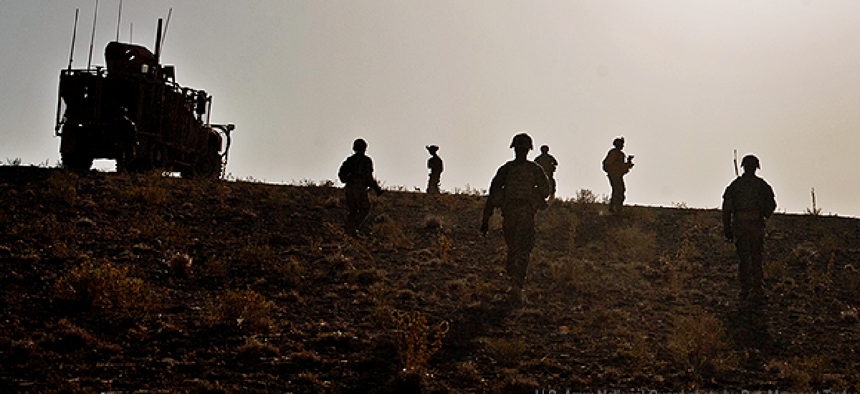Navigation by vibration: Army lab tests haptic tech


Connecting state and local government leaders
The haptic belt uses tactile feedback to help soldiers navigate in the field and automatically collect data, such as time to each waypoint and accuracy to each waypoint.
Soon soldiers may be able to navigate the battlefield -- by feel.
The Army Research Laboratory is developing haptic technology that directs soldiers on the ground via vibrations, enabling them to maneuver and visually focus on their environments without reading a map.
"Data are still being compiled; however, it is clear that soldiers rarely looked at the visual display when the tactile belt was 'on.' Soldier feedback was very positive," said Gina Hartnett, from the Human Research and Engineering Directorate (HRED) Fort Rucker, Ala., in an Army news article.
The miniature haptic technology resides in a lightweight belt worn by the soldier, although the technology could be placed in any number of objects, such as a glove, belt, inside the helmet or vest. The belt vibrating in the front indicates the soldier should move forward. If the vibration is on the right side, the soldier should turn to the right, and so forth.
The belt also can be used to warn soldiers of potential threats, provide status updates and communicate with other soldiers or intelligent robots. Different, unique pattern vibrations, similar to Morse code, distinguish what information is being relayed and what the soldier should do.
Researchers describe the technology as “hands-free, eyes-free and mind-free.”
Tests demonstrated that soldiers were able to quickly learn the system, attaining proficiency with the signals within 10 to 15 minutes. The most recent tests of the system were by soldiers at Fort Benning. Soldiers reported that they liked the technology, as it allowed them "to concentrate on other things and not the screen."
"This assessment gave us a great example of how a device can free up the senses so effectively. Course times were faster on tactile-assisted navigation legs. Soldiers reported being more situationally aware of their surrounding because they rarely, if ever, had to take their eyes off of their environment. Additionally, not having to interact with a visual display allowed their hands to stay on their weapon," Hartnett said.
The most recent tests of the system were on a night land-navigation course of about 900 meters. Soldiers received directional guidance and communications from a robot – either its status or a potential threat perceived by the robot. The belt also helped soldiers navigate exclusion zones and identify enemy targets. The system automatically collected data, such as time to each waypoint and accuracy to each waypoint.
“In a previous night study, soldiers said they were blind (night, fog, rain, night vision devices fogging up, etc.) and the belt led them straight to point, allowing them to focus attention on their surroundings," said Dr. Linda Elliott, from HRED's Fort Benning field element.
More tests of the system remain. "We are trying to collect more basic data, to identify the factors that make a tactile signal 'salient' – easily felt, immediately recognized and distinguished from others. That has to do with the type of tactile signal strength (and other engineering factors), individual differences (such as fatigue) and environmental factors," Elliott said.
At the same time the technology “must be made lightweight, comfortable, rugged, networked within a command and control system and they must be easy to use and easy to maintain.”




